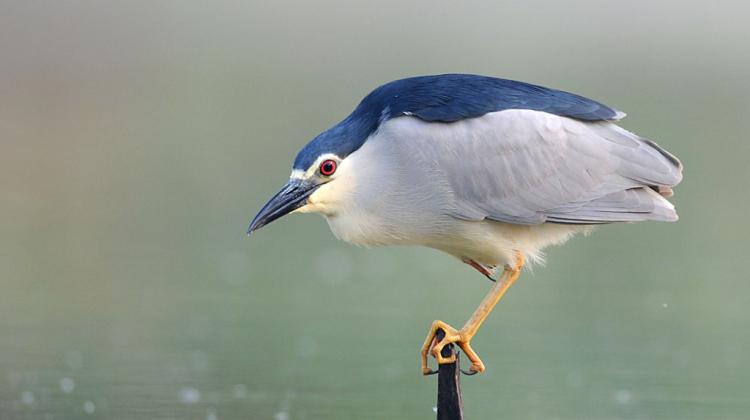Polish ornithologists have studied the migration routes of rare bird species
 Night heron. Photo by Dariusz Czernek
Night heron. Photo by Dariusz Czernek
Polish scientists were the first in the world to study the migration routes of night heron - one of the species of herons. Analysis was performed with the use of modern technology - GPS/GSM transmitters. Article on bird migration appeared in the "Journal of Ornithology".
The project of ornithologists began in 2012. The scientists captured three adult night herons in Brzeszcze (Małopolska). Each bird was fitted with a GPS/GSM transmitter provided by Polish company - Ecotone.
"These devices are miniature and constitute a little more than 3 percent body weight of birds, so they were not burdensome for them" - explained Dr. Mateusz Ledwoń from the Institute of Systematics and Evolution of Animals PAS in Kraków, one of the authors of the publication.
The devices could operate for many months because they were powered by solar panels placed on their surface. Every few hours the transmitter would send the bird location to the server; the information appeared in the form of a point on the map on the scientist’s computer.
"Studies have shown that during migrations to wintering grounds, night herons fly only at night, at about 50 km/h. During the day, in the intervals between night flights, night herons rested. During one night, birds would fly several hundred kilometres without rest" - described Dr. Ledwoń.
The biggest surprise for the researchers was the discovery that night herons migrate quite differently than their close "cousin" - purple heron that travels the entire route to the wintering grounds (over 4,000 km) in 5-7 days. Night herons apply the technique of "frog jumps" - after a few days of flying they make rest stops lasting about two weeks. Then take resume their journey. Night herons from the colonies in Poland must travel more than 4,000 km to reach the wintering grounds in the Sahel in central Africa.
"Our night herons rested in central Italy, Corsica, Sardinia and Algeria. Preliminary data indicate that migration of this species of birds to wintering grounds takes about two months" - added the ornithologist.
Night heron is a very rare species of heron - its entire population in Poland is less than 900 pairs. The only permanent nesting sites in Poland are near Oświęcim and Skoczów, and they are among the farthest nesting sites of this species in the northern part of Europe.
"We consider the results preliminary, due to the small number of transmitters. In addition, we failed to locate the target wintering grounds of the monitored birds" - said Dr. Ledwoń.
One of the birds probably died during the flight over the Sahara Desert. In the case of the other two, the transmitters stopped working due to too low charged batteries - perhaps the feathers partially covered the transmitters, which limited the access of light to solar panels. The researchers speculate that the habits of birds could affect poor charging. Night herons usually spend the day hidden in the reeds and shrubs, and feed mainly at night.
The team investigating the migrations of Polish night herons also includes Dr. Jacek Betleja from the Nature Department of Upper Silesian Museum in Bytom, co-author of the article in the "Journal of Ornithology". Purchase of three transmitters used during the research was financed by the Krakow Aggregate Operations Plant "Kruszywo S.A." - two gravel pits exploited by this company are home to nearly 30 percent of the Polish population of night herons.
PAP - Science and Scholarship in Poland
szz/ agt/
tr. RL
Przed dodaniem komentarza prosimy o zapoznanie z Regulaminem forum serwisu Nauka w Polsce.















